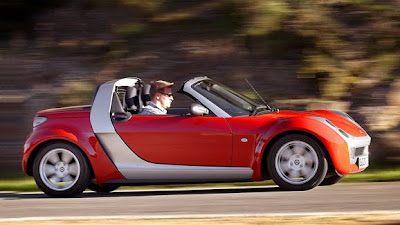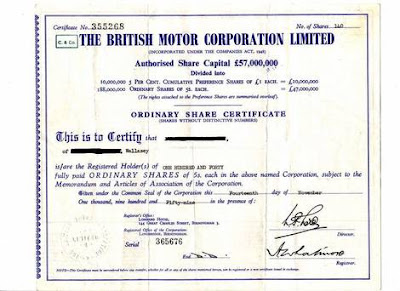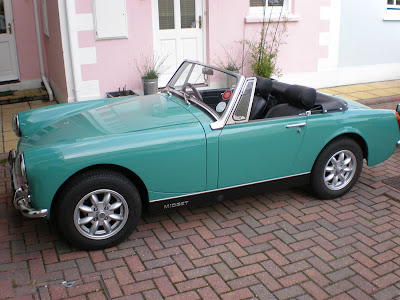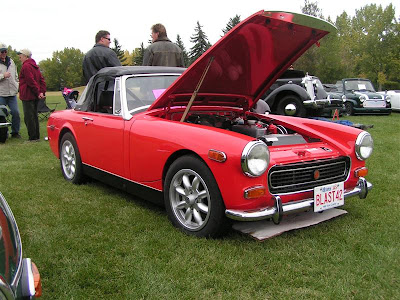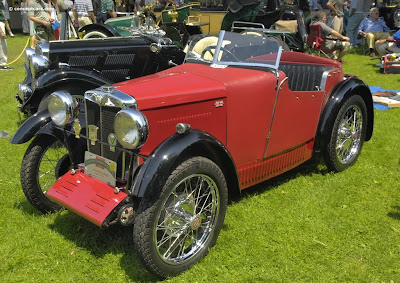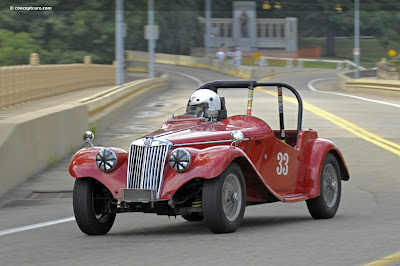In 1974 a new and, as it turned out, final version of the
Midget arrived. It was known as the
MG Midget 1500 Cars although it was officially still the
Mark III. This car was equipped with the 1493cc, four-cylinder, pushrod, OHV engine from its rival the
Spitfire, which also provided the transmission. As with many large groups, rationalisation was now the name of the game for
British Leyland. Furthermore, it was becoming increasingly difficult to make the A-series engine meet the required exhaust emission standards and still develop enough power, whereas this was easier with the larger-capacity
Triumph unit. The bigger engine, capable of producing 66bhp, improved the Midgets performance significantly, making a top speed in excess of 100mph easily attainable.

Picture Of
Mg Midget CarsAlong with the new engine and transmission came what many saw as less desirable changes. One of these was the introduction of the "rubber-bumpers" which were designed to meet US crash test legislations. These added considerably to the weight of the car, but were sculpted such that the car was still instantly recognisable as a
Midget.

Picture Of
Mg Midget CarsFurthermore, to ensure that the bumpers were at the correct height, it was necessary to raise the ride height of the car by a couple of inches. This obviously had the effect of reducing the roll stiffness at the rear, but contrary to popular belief the cars handling was not really impaired by these modifications.




























